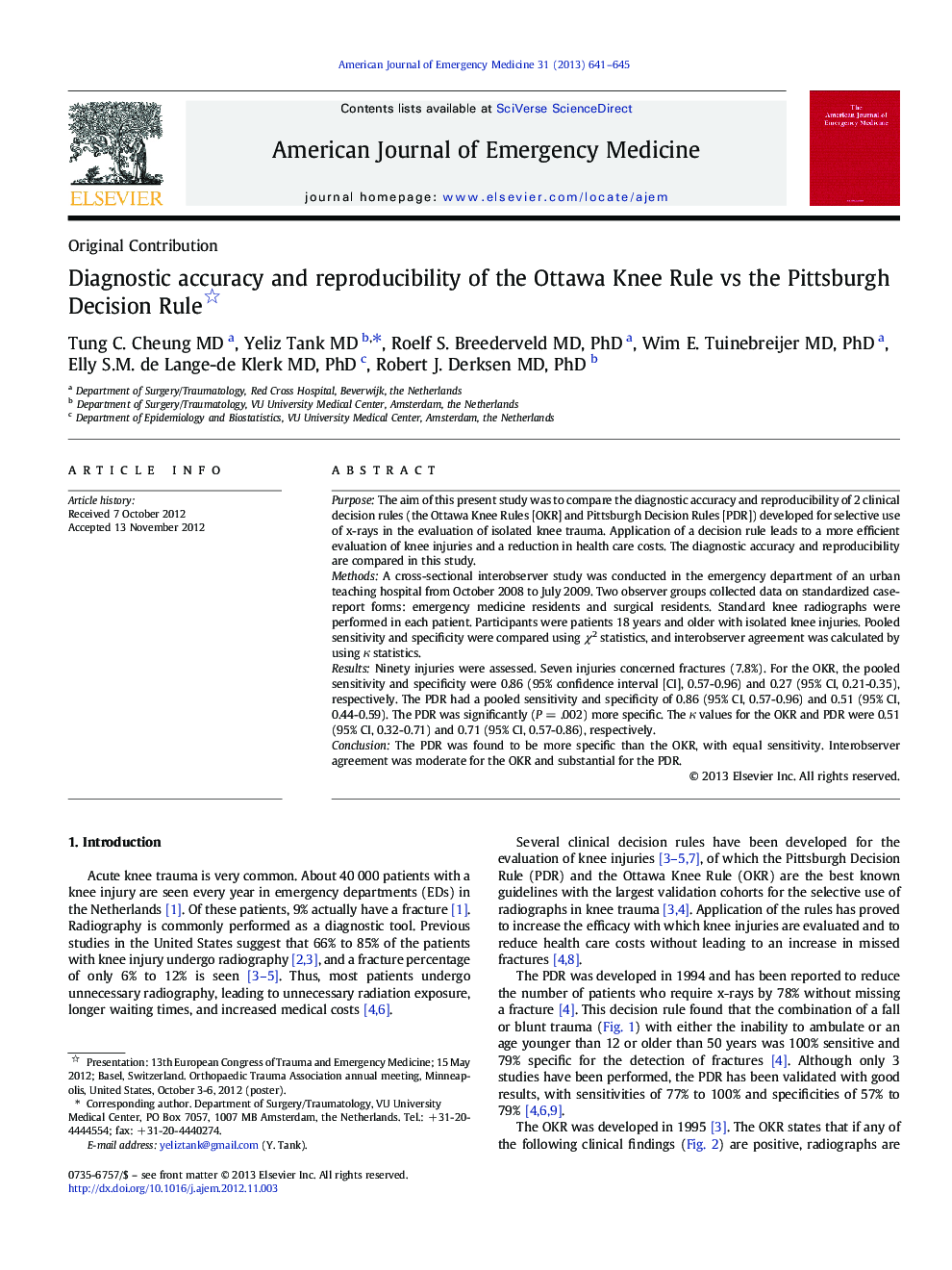| Article ID | Journal | Published Year | Pages | File Type |
|---|---|---|---|---|
| 3224981 | The American Journal of Emergency Medicine | 2013 | 5 Pages |
PurposeThe aim of this present study was to compare the diagnostic accuracy and reproducibility of 2 clinical decision rules (the Ottawa Knee Rules [OKR] and Pittsburgh Decision Rules [PDR]) developed for selective use of x-rays in the evaluation of isolated knee trauma. Application of a decision rule leads to a more efficient evaluation of knee injuries and a reduction in health care costs. The diagnostic accuracy and reproducibility are compared in this study.MethodsA cross-sectional interobserver study was conducted in the emergency department of an urban teaching hospital from October 2008 to July 2009. Two observer groups collected data on standardized case-report forms: emergency medicine residents and surgical residents. Standard knee radiographs were performed in each patient. Participants were patients 18 years and older with isolated knee injuries. Pooled sensitivity and specificity were compared using χ2 statistics, and interobserver agreement was calculated by using κ statistics.ResultsNinety injuries were assessed. Seven injuries concerned fractures (7.8%). For the OKR, the pooled sensitivity and specificity were 0.86 (95% confidence interval [CI], 0.57-0.96) and 0.27 (95% CI, 0.21-0.35), respectively. The PDR had a pooled sensitivity and specificity of 0.86 (95% CI, 0.57-0.96) and 0.51 (95% CI, 0.44-0.59). The PDR was significantly (P = .002) more specific. The κ values for the OKR and PDR were 0.51 (95% CI, 0.32-0.71) and 0.71 (95% CI, 0.57-0.86), respectively.ConclusionThe PDR was found to be more specific than the OKR, with equal sensitivity. Interobserver agreement was moderate for the OKR and substantial for the PDR.
